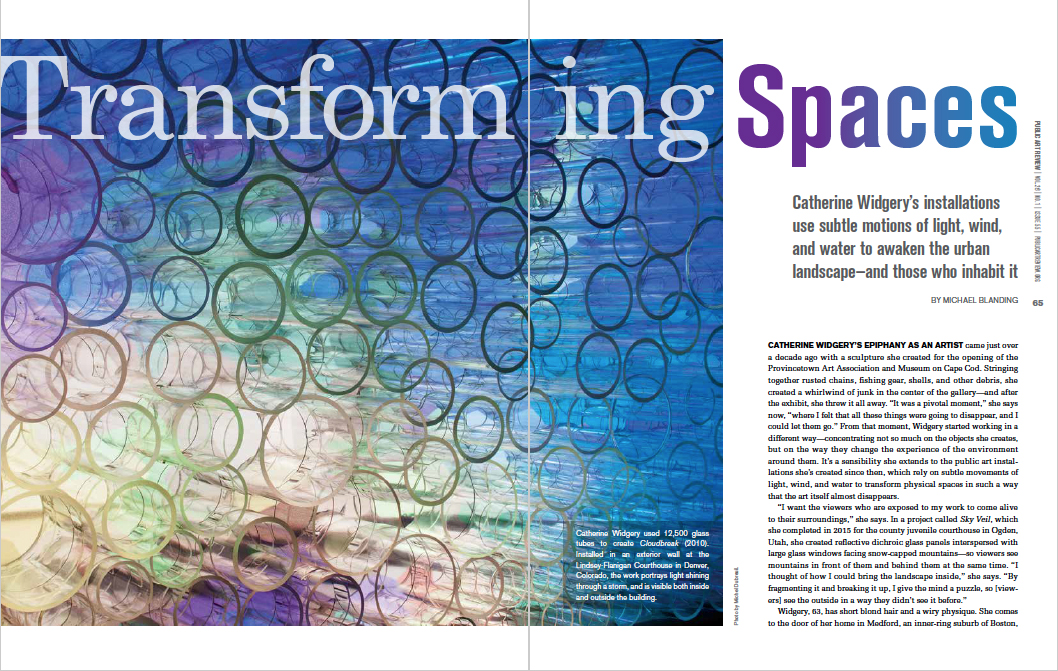TRANSFORMING SPACES
Catherine Widgery’s installations
use subtle motions of light, wind,
and water to awaken the urban
landscape—and those who inhabit it
BY MICHAEL BLANDING
Public Art Review Fall/Winter 2016
CATHERINE WIDGERY’S EPIPHANY AS AN ARTIST came just over
a decade ago with a sculpture she created for the opening of the
Provincetown Art Association and Museum on Cape Cod. Stringing
together rusted chains, fishing gear, shells, and other debris, she
created a whirlwind of junk in the center of the gallery—and after
the exhibit, she threw it all away. “It was a pivotal moment,” she says
now, “where I felt that all these things were going to disappear, and I
could let them go.” From that moment, Widgery started working in a
different way—concentrating not so much on the objects she creates,
but on the way they change the experience of the environment
around them. It’s a sensibility she extends to the public art installations
she’s created since then, which rely on subtle movements of
light, wind, and water to transform physical spaces in such a way
that the art itself almost disappears.
“I want the viewers who are exposed to my work to come alive
to their surroundings,” she says. In a project called Sky Veil, which
she completed in 2015 for the county juvenile courthouse in Ogden,
Utah, she created reflective dichroic glass panels interspersed with
large glass windows facing snow-capped mountains—so viewers see
mountains in front of them and behind them at the same time. “I
thought of how I could bring the landscape inside,” she says. “By
fragmenting it and breaking it up, I give the mind a puzzle, so [viewers]
see the outside in a way they didn’t see it before.”
(Download the entire article)

